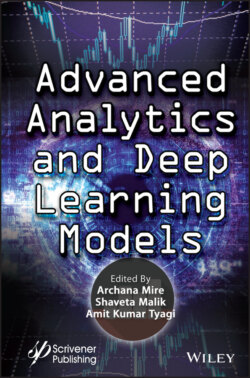Читать книгу Advanced Analytics and Deep Learning Models - Группа авторов - Страница 17
1.4 Historical Overview of AI in Education and Language Learning
ОглавлениеAI has evolved in terms of its philosophical approach over time. Intelligent Tutoring Systems (ITSs) were the first to incorporate AI into language learning in the 1980s aimed for personalized and autonomous learning. Early iterations of ITS were referred to as programs that sought to cater to the needs of learners by facilitating communication [22]. Another significant benefit of ITS was that it allowed for infinite repetitions and practice, something that could never be done with a human instructor. It was designed for the individual learner who wanted to improve their language skills by using tutoring systems. Despite of its advantages, several studies on integration of ITS in higher education found that it had moderate positive impact on the academic learning of college students [23]. However, after four decades, the more advanced and updated version of AI has revitalized the potential for personalized learning [24].
Although ITS made extensive use of drill and rote-learning mechanism built into the computer-based learning system, today’s AI applications are much more advanced, with the same aim of catering to personalized learning. The fundamental difference between the previous model of ITS and the current model is that the former involved a student working in isolation using an ITS and the later engages students in a networked environment. This exposes the learner to the authentic and natural learning scenarios providing social context for language learning.
As mentioned earlier, the remarkable advancement in AI has brought a significant and inevitable shift from CALL to ICALL. With advancements in mobile technologies and their applications in language learning, CALL paved the way for MALL, and similarly, development in AI has led to the rise of a new academic field called ICALL. NLP technologies’ language processing capabilities have numerous implications in the field of CALL, and the field of study that investigates and integrates such implementations is known as ICALL [25].
In the early 2000s, the Massive Open Online Courses (MOOCs) offered a highly required and cost effective alternative to the expensive higher education in the US and beyond. However, such courses could not facilitate learners’ participation, peer learning, scaffolding, or large-scale connections with global learners. Because of these constraints, the MOOC movement has stalled when it comes to delivering education on a wide scale. In contrast, many well-known ongoing MOOC initiatives, such as Coursera, Khan Academy, Udemi, EdX, and Udacity, have used AI and NLP techniques to improve learners’ engagement, active learning, and autonomy. This resurgence of AI, along with its strong NLP potential, has had a significant impact on second language education, as NLP-based tutoring systems can provide corrective input and adapt and customise instructional materials [5].
